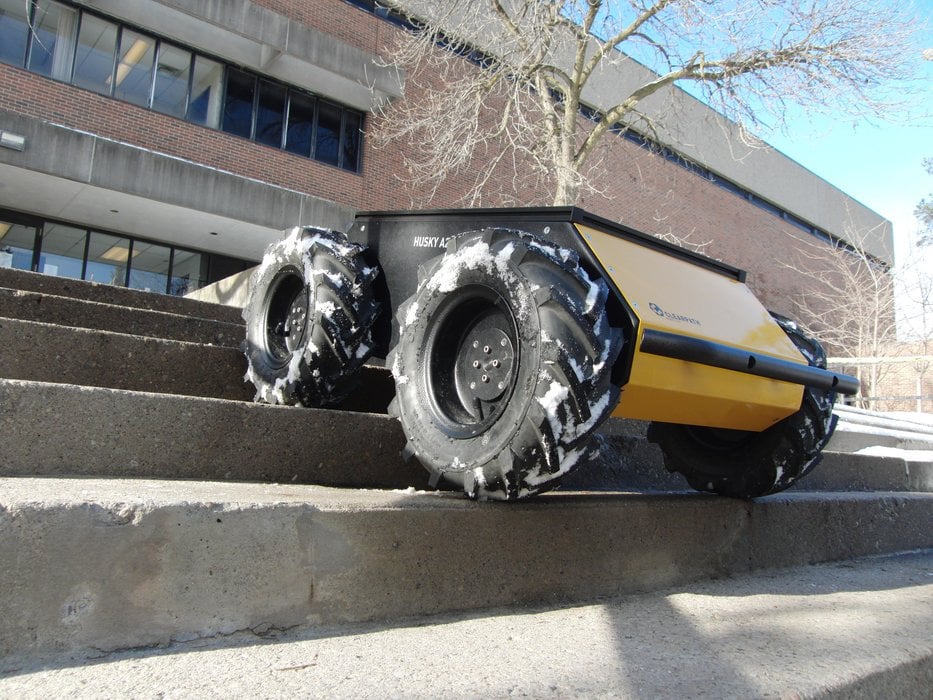www.industrymiddleeast.com
07
'11
Written on Modified on
Multi-Domain Modeling Critical to Unmanned Vehicle Designs
With products ranging from a portable and cost effective system for automating the collection of environmental water data (Kingfisher) to a rugged and easy-to-use unmanned ground vehicle for rapid prototyping (Husky), Clearpath Robotics is making a mark in the complex and growing field of robotics. The roboticists at Clearpath specialize in unmanned vehicle design and control, and their unmanned systems are used by some of North America's leading technical institutions for cutting edge industrial and military. MapleSim physical modeling and simulation software is a key partner in helping Clearpath design models quickly, because of its exceptional 3-D multibody dynamics and multi-domain modeling capabilities.

MapleSim is a high-performance physical modeling and simulation software tool from Maplesoft that uses a sophisticated symbolic computation engine to handle all of the complex mathematics involved in the development of engineering models. MapleSim has an intuitive multi-domain modeling and simulation environment including mechanical, electrical, hydraulic, thermal, and signal-flow systems.
From educational robots, to all-terrain vehicles comprising drive systems which encompass energy stores and kinematic configurations and actuators which use power transmissions; from payloads to multi-terrain systems, designing each robot gives the Clearpath team its own challenges. Moreover, in an effort to maximize efficiency, engineers are constantly trying to consolidate models of all the systems that they work with.
Add to this new industry trends. Previous generations of robots operated in ideal indoor conditions, on concrete or tile floors, whereas today’s all terrain robots operate in sand, mud, and water. Therefore, there is an increasing need to include capabilities such as sensing, processing, and communication in modern robots. Plus, there are additional mobility challenges like balancing the ability of the robot to overcome obstacles with quick movements on a flat surface. All these challenges mean new hurdles in design, modeling, and, of course, performance. They require a lot of complicated models with several design iterations, hindering the ability of engineers to explore further avenues in cost analysis, modeling and designing.
MapleSim is a key partner in helping overcome these challenges because of its exceptional 3-D multibody dynamics and multi-domain modeling capabilities. “Although we work with other tools like MATLAB® and Simulink®, they still need to be manually coupled into our models and design process. Using those tools also means that we have to have experts in each domain who will take care of that particular component. With MapleSim, we can eliminate these hurdles; everybody is able to work on a single model. This is why we're very excited about MapleSim,” said Gariepy .
Clearpath frequently needs to design robots based on an entirely new set of requirements – different surface conditions, different size and shape of the robot, or different performance criteria. Since MapleSim models can be highly parameterized, MapleSim gives them an ideal rapid prototyping environment for creating new designs. They build base models in which many elements that would be traditionally assigned a fix value are actually implemented as symbolic parameters, so that they can easily explore the effects of changing these design elements without the need to create a new model. Using these base models, they can adjust the parameters to meet the new conditions, and immediately get a starting point for the new design which they can then further refine.
“MapleSim models have fewer equations than others. It’s symbolic approach takes care of the grunt work and computes quickly. It's all that we're looking for in a tool,” concludes Gariepy.
MATLAB and Simulink are registered trademarks of The MathWorks, Inc.

